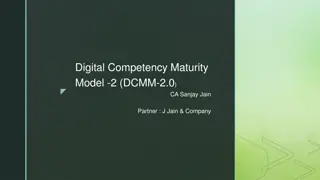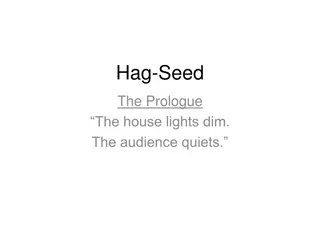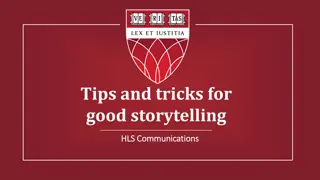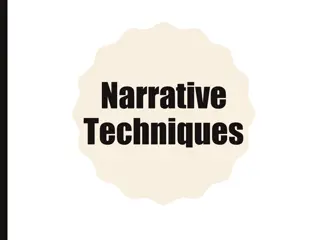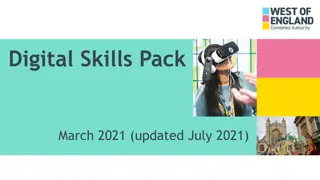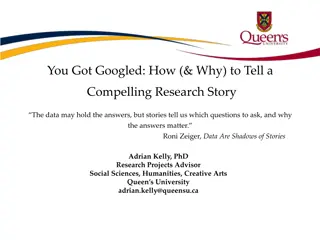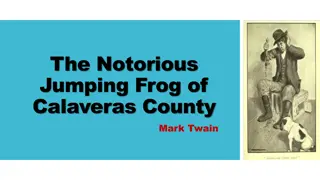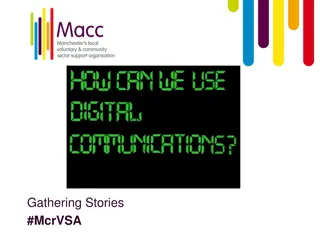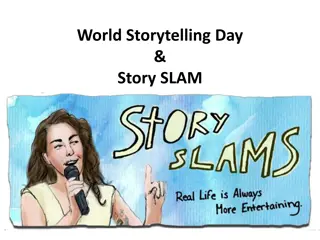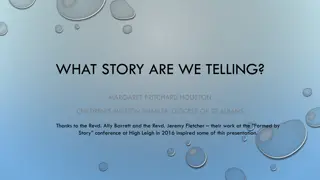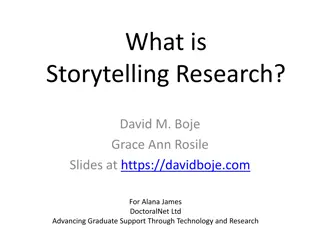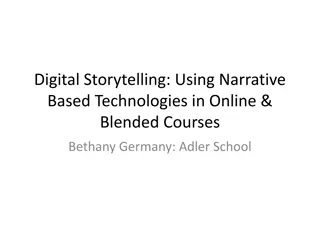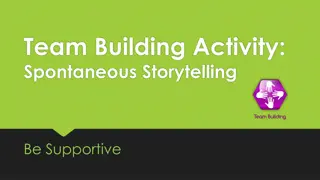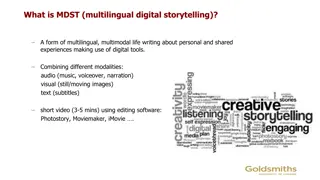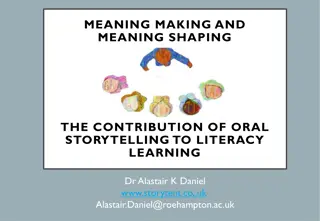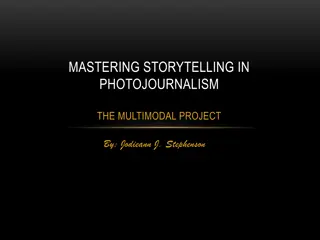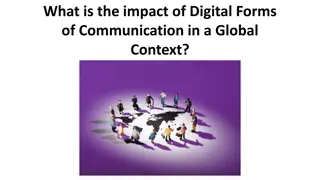The 7 Elements of Digital Storytelling
Explore the key components of digital storytelling through elements like narrative structure, point of view, and the use of voice and music. Learn how to keep your audience engaged and focused on the message while incorporating dramatic questions and careful audio choices.
Download Presentation

Please find below an Image/Link to download the presentation.
The content on the website is provided AS IS for your information and personal use only. It may not be sold, licensed, or shared on other websites without obtaining consent from the author.If you encounter any issues during the download, it is possible that the publisher has removed the file from their server.
You are allowed to download the files provided on this website for personal or commercial use, subject to the condition that they are used lawfully. All files are the property of their respective owners.
The content on the website is provided AS IS for your information and personal use only. It may not be sold, licensed, or shared on other websites without obtaining consent from the author.
E N D
Presentation Transcript
7 Elements of Digital Storytelling
Video One of the starting points for the development of digital storytelling, through the knowledge of the seven elements characteristic of Digital Storytelling, developed and published by the Center for Digital Storytelling (Lambert, 2003; Robin, 2006; Jakes, 2007) and with a certain sequence.
Video https://www.youtube.com/watch?v=a1f-_FXgJZM
all stories have a certain goal and pass the point of view or perspective of the author. However, this should remain simple, avoiding too much information, that may cause some kind of noise and divert the public's attention to other aspects, away from the initial purpose Point of View
The narrative should take place around a dramatic initial question, which aims to arouse curiosity and that will be answered by the end. Your goal is to leave the audience thinking, thus contributing to capture your attention throughout the course of the narrative
The strategy to use voice to narrate the story, or part of it, is one way to customize the narrative, giving it a more personal and unique nature, contributing to help understanding more complex issues. It is necessary to take precautions when performing the recording. The public needs time to process all the information (images, sounds, audio, ...), so a more leisurely pace will be necessary for the assimilation of the message
1) use of music or sounds, help sustain the whole plot of the story 2) must be used rationally and framed and not just as a mere prop 3) the music or background sounds, should be chosen carefully, otherwise it might confuse the message to be transmitted. 4) never mix background audio with built-in letters during the narration. 5) to the decrease in volume, at times when the narration incorporated.
1) the narrative should be short and restricted to content to convey the desired message, avoiding excessive detail so as not to overwhelm the audience with too much information 2) duration: should focus between 3-5 minutes through the use of images, audio and text messages 3) The text should be utilized in voice replacement or as a supplement.
The pace set in the narrative, should be adapted to the course of it: it should not be something constant which may cause some monotony. The pacing should be adapted for instance by making more rapidly for certain scenes involving an action or slower, in cases involving thriller or suspence.
https://youtu.be/AAVe4Bob3Ys?list=PLkALXvyBte0GZTE90TLEv_UGRXOCMz-Zmhttps://youtu.be/AAVe4Bob3Ys?list=PLkALXvyBte0GZTE90TLEv_UGRXOCMz-Zm


